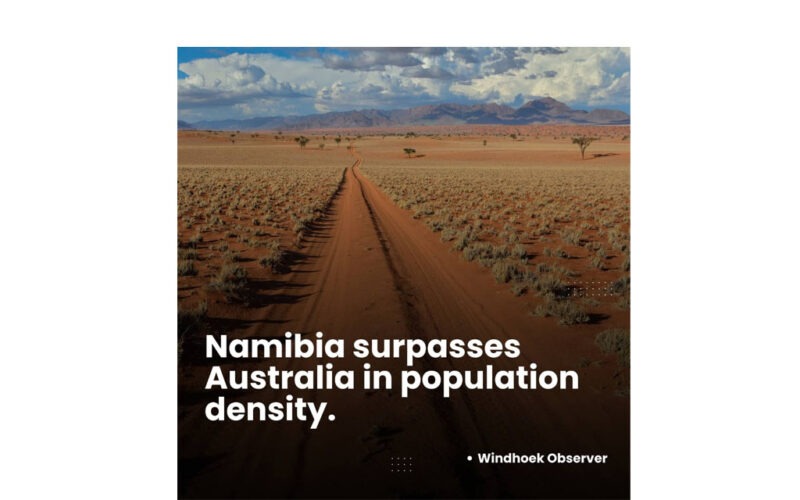Nrupesh Soni
This week, the Namibia Statistics Agency (NSA) unveiled census results revealing an unforeseen population count of 3,022,401, marking a pivotal moment as Namibia overtakes Australia in population density.
This development repositions Namibia from the second to the third least densely populated country in the world, trailing behind Mongolia and Australia.
The calculations conducted by the Facilit8 Namibia reveal that Namibia’s population density now stands at approximately 3.66 people per square kilometer. This figure slightly exceeds Australia’s density of about 3.46 people per square kilometer, highlighting the subtle yet significant demographic shifts occurring worldwide. These shifts hold extensive implications for resource management, urban planning, and environmental conservation on a global scale.
This remarkable increase in population density in Namibia is attributed to several factors, including advancements in healthcare, political stability, and gradual economic growth. Together, these factors have contributed to a lower mortality rate and a consistent population increase, reflecting a broader global trend where improved healthcare and economic conditions foster population growth in regions historically characterized by vast, uninhabited landscapes.
The Namibia Statistics Agency’s recent census figures, verified and analyzed by Facilit8 Namibia, offer a fresh perspective on the country’s demographic landscape. As Namibia confronts the challenges and opportunities presented by its increased population density, it becomes a focal point for similar nations worldwide, exemplifying the dynamic nature of population distribution and its impact on both national and international scales.
In the past 15 years, Namibia’s population has nearly doubled, intensifying the pressure on its education system and healthcare services—two sectors critical to the nation’s sustainable development. The education system, already facing challenges such as inadequate infrastructure and limited resources, now requires substantial investment to meet the growing demand for quality education. Similarly, the healthcare system, despite making significant strides in improving access and reducing disease prevalence, must expand its services to cater to the increased population, ensuring the maintenance of healthcare quality.
Looking forward, Namibia’s strategy to address the implications of rapid population growth involves comprehensive planning and investment in education and healthcare. These investments are crucial not only for enhancing the quality of life but also for developing a skilled workforce capable of driving economic innovation and diversification. However, without targeted efforts to tackle these issues, there is a risk of exacerbating inequalities and overburdening social services, which could impede Namibia’s developmental objectives.
As the international community observes these developments, Namibia’s progress in overtaking Australia in population density serves as a compelling reminder of the fluid demographic patterns shaping our world. The insights derived from these shifts are invaluable, offering policymakers, researchers, and the global community a unique perspective on the future of population distribution across the planet.




